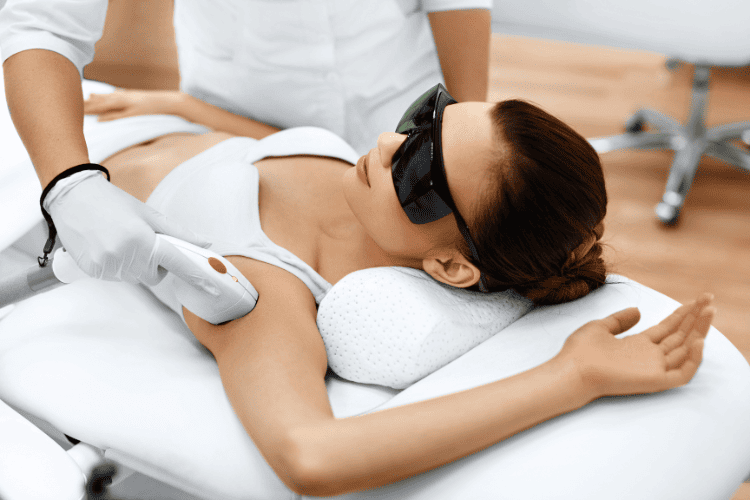Non-surgical dermal fillers are injectable treatments that restore lost volume, smooth out deep wrinkles, and subtly enhance facial contours, providing […]
Non-surgical dermal fillers are injectable treatments that restore lost volume, smooth out deep wrinkles, and subtly enhance facial contours, providing a refreshed and more youthful appearance
without the downtime associated with surgery.
But not all fillers are created equal. For example, why does one filler last six months, while another promises results for two years?"
The answer lies deep within the skin’s structure, specifically in the body's natural response to certain materials.
The secret to extended, natural-looking results is not just what the filler contains, but how it encourages your body to rebuild the foundational elements of youthful, firm skin with collagen.
Collagen and Skin Health
Collagen is often described as the scaffolding of the skin. It is the most abundant protein in the human body, forming a fibrous network that provides structure, support, and tensile strength to the dermis. Along with elastin, collagen is responsible for the skin's elasticity, firmness, and plumpness.
Collagen Decline
Unfortunately, the body’s ability to produce and maintain high-quality collagen diminishes with age. Starting in our mid-to-late twenties,
collagen production slows down, and existing collagen fibers weaken and fragment. This process is accelerated by environmental factors, including UV exposure, pollution, smoking, and diet.
Visible Signs of Collagen Loss
- Wrinkles and Fine Lines
- Facial Sagging (Laxity)
- Volume Depletion
How Do Dermal Fillers Work?
Dermal fillers are generally classified based on their primary mechanism of action and composition.
The fundamental mechanism of all fillers is to inject a gel or solution beneath the skin to occupy space, thereby replacing lost volume and physically lifting lines and folds.
However, their ultimate success and longevity hinge on whether they are merely space-occupiers or active biostimulators:
Temporary, Hyaluronic Acid (HA) Fillers
These are the most common fillers, including brands like
Juvéderm. They are synthetic gels composed of hyaluronic acid, a complex sugar naturally found in the skin.
Biostimulatory Fillers
Brands like
Radiesse and Sculptra contain unique active particles that, in addition to providing initial volume, actively prompt the body’s biological response to generate new collagen.
Also Read: Everything You Need to Know About Hyaluronic Acid Fillers
HA Fillers That Primarily Add Volume (Shorter Duration)
Hyaluronic acid (HA) fillers are the gold standard for immediate aesthetic correction and targeted contouring.
When injected, the HA gel molecules immediately integrate into the tissue and, most importantly, attract and bind to water molecules. This mechanism provides an instant and often dramatic increase in volume and hydration, smoothing out static wrinkles and restoring contour.
Results are visible immediately, which is highly satisfying for patients. However, HA is a substance that the body recognizes and can eventually break down through natural metabolic processes.
Depending on the cross-linking of the specific product, the density of the gel, and the treatment area, HA fillers typically last between 6 and 12 months.
A significant safety benefit of HA fillers is their reversibility. If a patient experiences an undesirable outcome or a complication, the enzyme hyaluronidase can be injected to dissolve the HA quickly and safely.
Fillers That Stimulate Collagen (Longer Duration)
Biostimulatory fillers offer a fundamentally different approach. Their primary goal is not instant plumping, but collagen remodeling, a slow, controlled process of tissue regeneration:
Radiesse (Calcium Hydroxylapatite)
Radiesse consists of microscopic calcium hydroxylapatite microspheres suspended in a smooth gel carrier. It provides an initial, immediate lift and volume correction, similar to HA.
Over the following weeks, the gel carrier is absorbed by the body. The CaHA microspheres remain and serve as a scaffold. These particles stimulate the surrounding cells, known as fibroblasts, to produce new collagen and elastin fibers around the microspheres.
Since the results are sustained by the patient’s own newly grown collagen, the results from Radiesse typically last 12 to 18 months, with some patients reporting sustained results even longer.
Sculptra (Poly-L-lactic Acid)
Sculptra is composed of poly-L-lactic acid (PLLA), a biocompatible, biodegradable synthetic material long used in dissolvable sutures. Unlike other fillers, Sculptra provides minimal instant volume. PLLA powder must be reconstituted and requires time to work.
Once injected, the PLLA particles trigger a robust inflammatory and healing response, stimulating fibroblast activity intensely. PLLA absorption and simultaneous new collagen growth is gradual, taking several weeks to months.
Because Sculptra relies entirely on the patient's biological response to build native, structural collagen, it often requires a series of treatments (typically 2-4 sessions).
However, once the collagen framework is established, results can last 2 years or more, making it one of the longest-lasting injectable treatments available for facial volume loss.
The Science Behind Collagen Stimulation
The longevity of biostimulatory fillers is directly tied to their ability to leverage the body's natural healing cascade. When injected, materials like CaHA or PLLA are recognized by the body as inert foreign structures. This initiates a controlled, low-grade inflammatory reaction known as the
foreign body response.
Within this controlled response, specialized immune cells and fibroblasts migrate to the area. Fibroblasts are the cellular factories responsible for producing collagen and elastin.
They interpret the presence of the filler particles as a need for structural repair and begin weaving dense, new collagen fibers around the microspheres.
The filler material itself eventually degrades and is absorbed by the body. What remains is the neocollagenesis: the newly formed, permanent collagen lattice that supports and thickens the skin. This structural reinforcement, built from the patient’s own tissue, is inherently more resistant to rapid breakdown than an inert, injected gel, explaining the significantly extended duration of results (18 to 24 months or longer).
Why Some Collagen Fillers in Lakewood Ranch Last Longer Than Others
1. Composition and Particle Size
Biostimulatory particles (CaHA, PLLA) are designed to resist immediate degradation, serving as a long-term anchor or scaffold until the body's own collagen takes over. HA gel, while complex, is ultimately softer and more easily broken down by the body’s hyaluronidase enzyme.
2. Treatment Area and Placement
Fillers placed in static, deep structural areas generally last longer than fillers placed in dynamic areas, regardless of their composition, simply because movement speeds up metabolism. Collagen stimulators are often placed deeply to rebuild the foundational structure.
3. Metabolism and Lifestyle
Highly active individuals, those with excellent circulation, or those who are genetically predisposed to rapid cellular turnover may break down HA fillers faster. Lifestyle factors like sun exposure and smoking also contribute to
faster collagen degradation, potentially shortening the lifespan of even biostimulatory results.
Considerations and Limitations
While powerful, collagen stimulators are not suitable for every treatment and come with specific constraints:
Sculptra, in particular, requires patience. Final, optimal results are typically achieved 4-6 months after the final session in the treatment series.
Next, unlike HA, biostimulatory materials cannot be immediately dissolved. This necessitates a more conservative treatment approach and reliance on the injector's skill.
Due to their nature and longevity, biostimulatory fillers require exceptional knowledge of anatomy and advanced injection techniques to ensure smooth, natural distribution and prevent nodule formation.
Combining HA and Collagen-Stimulating Fillers
The most advanced and effective approach to total facial rejuvenation uses the strengths of both filler types in a strategic, layered manner: the "best of both worlds" approach.
Collagen stimulators like Radiesse or Sculptra are injected deeply to rebuild the bony or deep fat pad structure (e.g., temples, deep cheeks, jawline). This creates a firm, lasting foundation.
HA fillers are then used more superficially to address precise concerns, such as filling specific lines (nasolabial folds), adding instant volume to the lips, or subtly augmenting the tear troughs.
This comprehensive strategy delivers immediate gratification in targeted areas while investing in the long-term, natural collagen production that sustains youthful structure for years.
Wrap-Up
The longevity of a dermal filler depends on the composition and its ability to engage your body’s own healing and regenerative powers.
Temporary HA fillers offer immediate, reversible correction while collagen-stimulating fillers like Radiesse and Sculptra offer extended, natural, and sustained rejuvenation by encouraging the growth of your native collagen.
Interested in expertly injected dermal and collagen-stimulating fillers? Book a consultation at Elite Med Spa Lakewood Ranch to begin your journey. 


